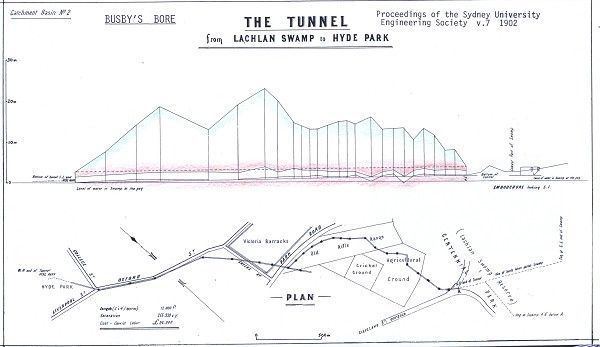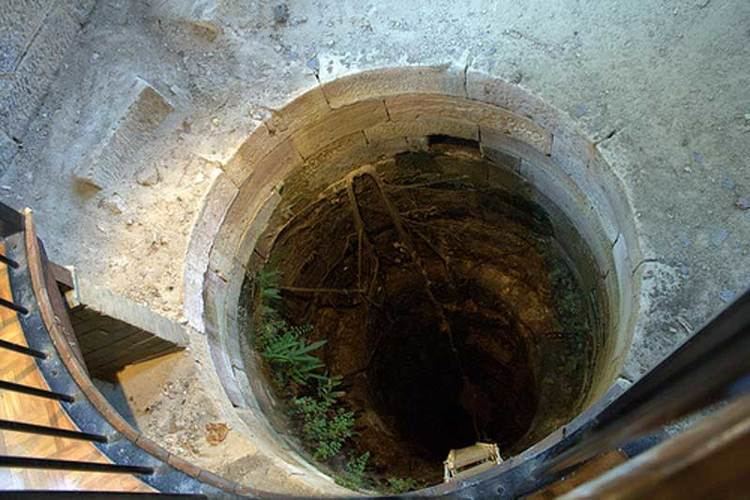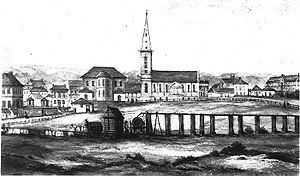The Busby's Bore was Sydney's second water supply. The heritage-listed bore was built by convict labour between 1827 and 1837.
Contents

History

By the 1820s, the Tank Stream, Sydney's original water supply, was in dire straits. It was little more than an open sewer and the growing colony was reliant on wells or water carted from the Lachlan Swamps (now Centennial Park).

In 1826, John Busby recommended that water from the Lachlan Swamps be delivered to a reservoir at the Racecourse (now Hyde Park) via a tunnel (or 'bore'). The reservoir was not approved but construction of the tunnel began in September 1827. The Bore was not completed until 1837 but began supplying drinkable water in 1830.

The Bore commenced at what is now Busbys Pond, close to the present Lang Rd entrance to Centennial Park and ended in the present Hyde Park near the Oxford Street entrance - a total distance of about 3.5 kilometres (2.2 mi). From there, a line of pipe supported on trestles extended to a point near the corner of Park and Elizabeth Streets.
The Bore was built by convict labour, mostly through solid sandstone. It averaged 1.5 metres (4 ft 11 in) high by 1.2 metres (3 ft 11 in) wide, though it varied from 0.9 metres (2 ft 11 in) by 0.9 metres (2 ft 11 in) to 3.5 metres (11 ft) high. The completed Bore delivered about 1.5 megalitres (53×103 cu ft) water per day.
In 1833, pipes were laid to the Port to allow ships to be supplied. Starting in 1844, reticulation pipes were laid, allowing houses to be connected, as well as the establishment of a number of public fountains. In 1854, supply was supplemented with the installation of a small pumping station at the lower end of the swamp, as well as a number of small dams. In 1872, the Bore was cleaned and some irregularities removed, increasing the tunnel flow to about 4.5 megalitres (160×103 cu ft) per day.
Starting in 1859, Busby's Bore was supplemented and later supplanted by water pumped from Botany Swamps. In 1934, part of the Bore under Oxford Street was filled with sand to remove the risk of subsidence under the tram lines.
The Bore remains under the ownership of Sydney Water. It is listed on the New South Wales Heritage Register and the former Register of the National Estate and is protected by a Permanent Conservation Order.
